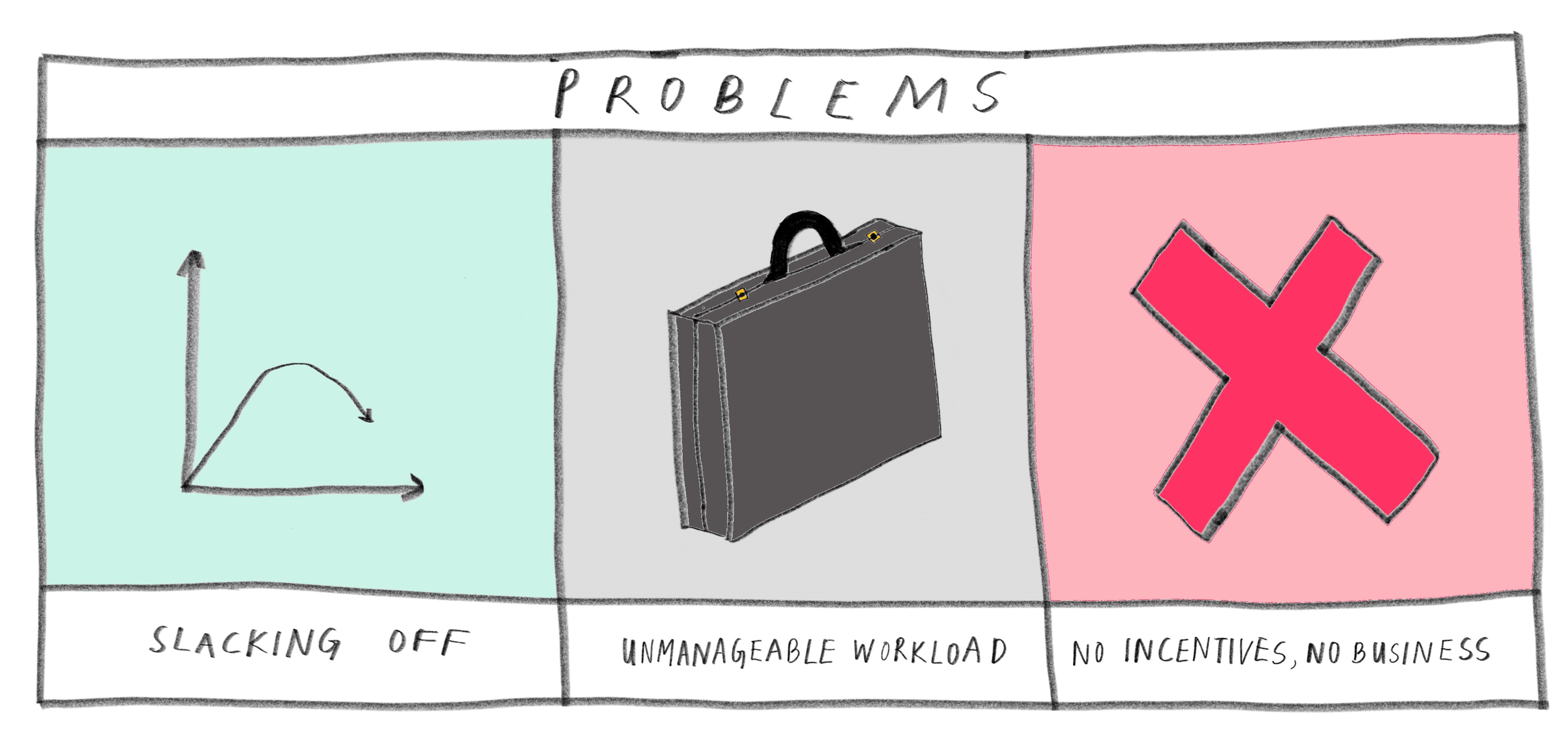Did you know that every McDonald’s outlet across the globe looks similar? Even the method to make burgers is the same.
McDonald’s, one of the leading fast-food restaurant chains in the world, has standard procedures that individual restaurants follow, no matter what the location is. In addition to creating a uniform brand identity, it reflects the essence of scientific management in practice.
Read on to explore the history, meaning, benefits and relevance of the Scientific Management Theory in today’s fast-paced world of work.
-
A Brief History Of Scientific Management
-
The Meaning Of Scientific Management
-
The Importance Of Scientific Management
-
The Principles Of Scientific Management
-
Applying The Scientific Management Theory
A Brief History Of Scientific Management
The Scientific Management Theory or Taylorism is one of the earliest theories of workplace management. It was named after Fredrick Winslow Taylor, an American mechanical engineer who applied engineering principles to factories. He started the scientific management movement with his associates to study how work was performed and how it affected productivity. It eventually came to be known as Taylorism, after the theorist himself.
During the early years of his career, Taylor studied the working patterns in manufacturing industries. He found that there are several issues in industrial management that previous management theories don’t address. In Taylor’s seminal work The Principles of Scientific Management, he argued that making people work hard wasn’t as effective as optimizing the way they worked. In other words, he proposed that optimizing jobs would increase productivity. Taylor was later dubbed the ‘Father of Scientific Management’.
The Meaning Of Scientific Management
Taylor’s Scientific Management analyzes and synthesizes workflows. He introduced a scientific approach to productivity, which meant an increase in efficiency can lead to higher productivity and profits. He also believed that there were universal laws that governed efficiency and were independent of human judgment. Additionally, Taylor’s theory recognized the following problems:

-
Employees have a tendency to slack off if they don’t enjoy work
-
Sometimes the workload is too high and unmanageable
-
Without incentives, business production is likely to suffer
Therefore, Taylorism highlighted the importance of management in employee productivity and development. Moreover, by focusing on monetary incentives and training activities, both employers and employees would benefit from this management style. When profits are maximized, it allows employers to pay employees based on how much they produce. Therefore, the scientific approach creates a win-win situation. In short, the meaning of scientific management can be summarized as:

-
Using scientific methods to identify the singular best way of doing a task
-
Clear division of roles and responsibilities
-
Higher pay for high-performing employees
-
Hierarchy of authority and monitoring employee progress
Taylor’s Scientific Management used scientific methods to solve managerial problems. He believed that transferring control from employees to managers can make a big difference. Scientific management methods such as employee training and proper staffing can increase labor productivity. This can further boost economic efficiency.
The Importance Of Scientific Management
Taylor’s Theory of Scientific Management studied the processes involved in factory production and viewed them as part of one big machine. For increased efficiency, Taylor believed that there needs to be planning, coordination and continuous direction. There are several other advantages of the Scientific Management Theory, such as:
-
It helps organizations allocate their resources properly, therefore allowing them to maximize their profits
-
It allows quality management, which further helps businesses strengthen their relationship with employees
-
By scientifically directing employees to desired objectives, businesses can ensure an increase in productivity
Essentially, by focusing on cause-and-effect relationships, this management technique overcomes traditional opinions and prejudices that affect efficiency at work.
The Principles Of Scientific Management
Taylor’s Scientific Management Theory rejected the traditional philosophy related to managing work and employees. Moving beyond the rule-of-thumb techniques of managing the workforce, Taylor proposed his revolutionary ideas in the form of several fundamental principles.
-
Emphasis On Science
Taylor believed that all industries should adopt scientific techniques for essential management decisions instead of relying on outdated methods. Earlier, the rule-of-thumb method, which developed as a result of experience and personal judgment instead of proper technical research, dominated the workplace. Scientific management solved the challenges posed by the conventional methods as it:
-
Emphasized data collection, analysis and standardizing procedures
-
Used facts and scientific ways to address challenges and make decisions
-
Moved away from personal judgment, which was likely to be riddled with biases
-
System Of Selection And Training
A scientific system of selecting and tailoring an organization’s workforce can reduce the chances of hiring underperforming employees. In other words, a business should hire the right employees for the job, otherwise, it may lead to inefficiency. Therefore, organizations must:
-
Be vocal about requirements (physical, mental and others) for employees for each job
-
Select and train employees, and help them meet job requirements
-
Offer opportunities to improve performance levels, efficiency and prosperity
-
Cooperation, Not Individualism
Cooperation between managers and employees is of great significance. Instead of internal competition, businesses should make an effort toward collaboration. This change in workplace dynamics can lead to increased profits as people will work together to maximize efficiency. A few things to note are:
-
Everyone should consider one another to be an important contributor in the organization
-
Efforts should be made to reduce any friction between employees and employers
-
Management should understand employee requirements and maintain harmony in their relationships
-
Mental Revolution
Taylor realized that there should be a complete change in outlook, both from management and employee, to improve organizational efficiency. Change in attitude and behavior towards each other is instrumental in rolling things out in a time-efficient manner. Here’s how employees and employers can change things:
-
Employees and employers need to recognize each other’s efforts and should work toward a mutually beneficial relationship
-
Managers should use scientific management techniques to improve the working conditions of employees; they should increase pay for increased output
-
Employees should utilize available resources and perform their jobs with attention and dedication; increased remuneration should act as an incentive to boost productivity
-
Optimum Output
An organization’s effectiveness also relies on the personal interests, skills and abilities of employees. Implementing, training and learning best practices will maximize output. In addition to training, organizations should:
-
Follow the principle of maximum output instead of restricted output and focus on maximizing prosperity for both managers and employees
-
Help employees utilize available resources to gain higher profits and wages
-
Help employees attain the highest level of efficiency by recognizing their strengths
Therefore, the Scientific Management Theory made several significant contributions and revolutionized the development of management practice.
Applying The Scientific Management Theory
It’s important to remember that Taylor’s management principles were highly influenced by the production methods of the early 20th century. It’s closely related to an authoritarian leadership style where managers enjoy a lot of control. Despite the advantages and relevance of the Theory of Scientific Management, there are several criticisms against it. It ignores the social aspect of management and views workplaces as machines. Standardization deprioritizes the uniqueness of employees, their emotions and viewpoints. The procedure is likely to eventually affect the quality of work.
Although Taylor’s Scientific Management approach is quite traditional, you can apply some of the principles in today’s work environment. Here’s how:
-
Analyze Work Procedures
The most efficient way to determine how to complete a task is to experiment with several approaches. Find out which method works the best and is the most time-efficient. By standardizing the most effective technique, you can help employees reduce the time taken and increase productivity.
-
Define And Delegate Tasks
Sometimes projects are complicated and time-consuming. Instead of assigning one project to one employee, it’s best to divide responsibilities among multiple employees. This allows individuals to complete their part of the project, therefore reducing the time it would have taken otherwise. Defining responsibilities and delegating tasks is the way to go.
-
Utilize Employee Skills
You should always play to your team’s strengths when it comes to assigning tasks. By doing so, individuals use their existing skills and talent to their maximum potential, therefore being as productive as possible. You can help establish common goals and offer monetary incentives upon meeting or exceeding expectations. Provide regular feedback and review progress if possible.
-
Establish Professional Hierarchy
By establishing a workplace hierarchy, you can help employees understand what is expected of them and who they’ll report to. The hierarchy allows you to provide direction and support, therefore ensuring that people meet their deadlines and remain productive.
To successfully practice Taylorism, you need to first understand how your team functions. Harappa’s Managing Teamwork course will equip you with tools to imbibe team culture and collaborate with people with different working styles using emotional intelligence. It will even help you master the art of giving and receiving feedback. You'll meet your goals by utilizing the various skills of team members. Trust Harappa to make a difference!
Explore Harappa Diaries to learn more about topics such as Elton Mayo's Human Relations Theory, the Max Weber Theory Of Bureaucracy, What Is Cooperative Learning and Management By Objectives to foster a team culture that helps individuals maximize their potential.
 now, no signup required!
now, no signup required!













